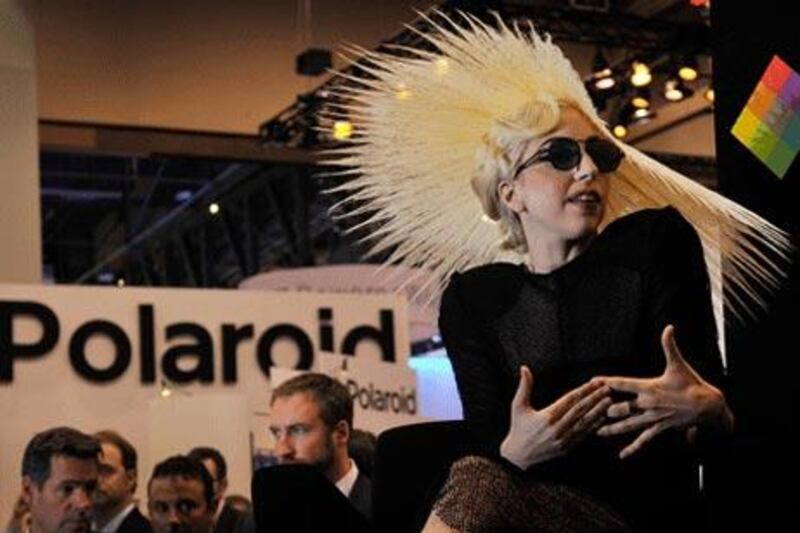There are times when it seems as if we are moving backwards. There was the closure of Concorde in 2003 and the announcement in 2007 that Polaroid would cease production of its instant cameras. In both instances, there was no new, improved version to replace them: you still can't fly from London to New York in less than three hours, and there is no simpler way of taking a picture and holding the finished article (albeit with some frantic flapping in between) within 60 seconds of pressing the button. Yes, digital cameras now provide a limitless number of instant images that we can edit immediately, but in order to get a hard copy, you need to link up to a printer. Try doing that on the beach.
So the news that Lady Gaga - the scantily clad purveyor of peroxide pop whose 2008 album, The Fame, topped the charts - is now a creative director of Polaroid, sounds promising. Information about the specifics of her role is scarce, but the 73-year-old company has confirmed that "new products by Lady Gaga will hit retail shelves starting in late 2010". By new products, could they mean film? Polaroid announced in 2008 that production of its instant film would stop. The last batches expired last October, marking the end of an era for the clunky but once wildly popular camera.
It left a legion of fans bereft, including, presumably, the fashion world, which relied heavily on the ability to take instant shots of a look, tack them on to a clothes rail and use them to recreate the style later, as well as the artist David Hockney, who made huge collages of his famous landscapes using Polaroids. To mark its passing, several world-renowned photographers, including David Bailey, Elliott Erwitt, Helmut Newton and Rankin, contributed to an exhibition in London on the date the last batch of film expired. Called Polaroid: Exp 09.10.09, it featured specially commissioned Polaroid shots as well as some by Andy Warhol, perhaps the most famous proponent of the camera.
Invented in 1947 by Edwin H Land (who started experimenting with instant film when his daughter asked why she could not see their holiday photographs as soon as they had been taken), the Polaroid instant camera reached the height of its popularity in the 1970s. In 1974, an estimated one billion Polaroid shots were taken worldwide. People loved the inimitable style of the photos perhaps more than their convenience. Slightly blurred and discoloured, they became known for their unique aesthetic, bathing their subjects in a warm, unselfconscious glow. For the first time, moments could really be captured on film. There was even a handy white strip at the bottom so you could annotate them.
But the rise of the digital camera had a predictably throttling effect. Suddenly, instant gratification was available as many times as your memory stick would allow. Mobile phones followed suit, and clumsy Polaroid cameras started to look like the dinosaurs of the industry. Thankfully, the hiatus may soon be over now that the Haus of Gaga is on board. It "has been developing prototypes in the vein of fashion/technology/photography innovation, blending the iconic history of Polaroid and instant film with the digital era", the pop star said in a statement.
And thanks to The Impossible Project, a group of European Polaroid enthusiasts who have raised enough capital to lease a former factory in Holland, some products should soon be back on the market. In fact, just last week at the International Consumer Electronics Show in Las Vegas (the one that was dominated by the launch of Google's iPhone rival, the Nexus One), Polaroid announced the PIC1000, an updated version of the classic instant camera, as well as a digital version. Some of the instant film will go back into production, too.
So those of us who have always nursed a desire to tape nifty Polaroid snaps of the contents to all of our shoeboxes have been graced with a second chance. It may mean stepping back in time in terms of technology, but what good would the system possibly be if it was hidden away on a memory stick?





